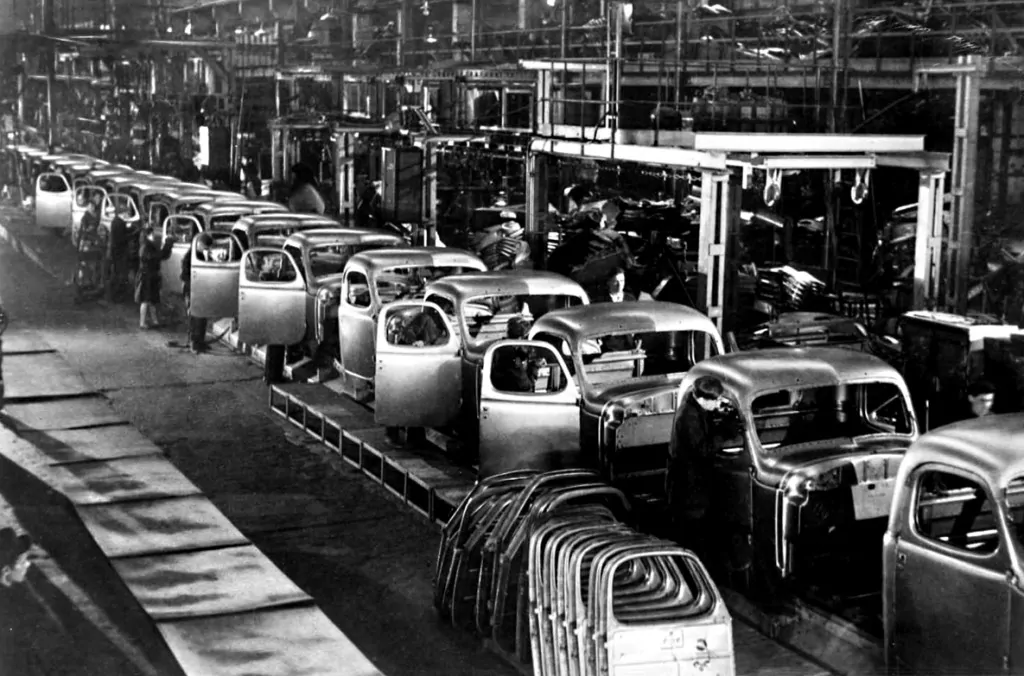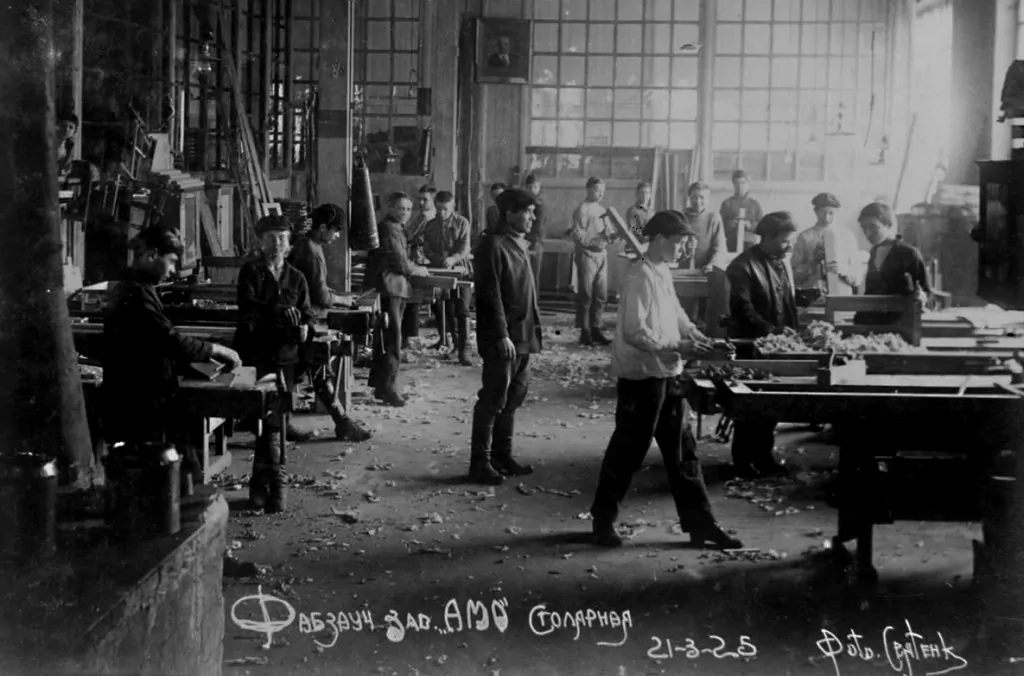Exhibition in GRAD
20 June – 24 August 2014
Curated by ELENA SUDAKOVA and ALEXANDRA CHIRIAC
Exhibition design by CALUM STORRIE and KATYA SIVERS
Work and Play Behind the Iron Curtain brings together over fifty key objects featuring the quirky, colourful and often charming design style that emerged from the 1950s in the Soviet Union. The preceding period, bound by more severe, functional principles, is examined through models and photographs from the famous ZIL factory, which produced both armoured trucks and domestic appliances. Part of GRAD’s on-going exploration of Russian design history, this show tackles a relatively unknown yet prolific period.

For decades the ZIL factory (so named in 1956, but in existence since 1916) was one of the most prestigious industrial enterprises in the country. Mainly devoted to the production of motor vehicles, it manufactured trucks and military vehicles alongside the exclusive limousines favoured by party officials. For the masses the factory began producing its own brand refrigerator in 1950, which became an aspirational object for Soviet homes, even if it often stood empty. Through motor vehicle prototypes and never-before-seen period photographs, GRAD’s display reveals the history of the factory, the changing lives of its workers, and why being a ZIL employee was seen as an enviable position.

ZIL’s 1950 expansion from army vehicles to refrigerators was emblematic of the times. From the late 1950s, millions of so-called khrushchevkas, or standardised apartment blocks with rooms of miserly proportions, sprang up across the Soviet Union. These developments intensified in the wake of the American National Exhibition, held in Moscow in 1959, which had become notorious thanks to the impromptu war of words between Nixon and Khrushchev: the so-called ‘Kitchen Debate’. Although the Soviets had launched the Sputnik two years earlier, more down-to-earth matters such as poor living conditions and a lack of consumer goods were slow in being tackled. Visitors to the American National Exhibition were rumoured to jostle for the privilege of picking up used Pepsi cups. Determined not to be outdone, Khrushchev focused his emerging economi c plan on ‘catching up and overtaking’ capitalism, and offering every family a modern flat of its own.

GRAD’s exhibition examines daily life in the new builds through the resulting boom in Soviet design, which saw the development of many beloved staple items of the Eastern Bloc: from the Chaika vacuum cleaner and the Vyatka scooter to Alenka chocolate and Nevalyashka roly-poly dolls. Bringing together domestic appliances, food and cosmetics packaging, electronic devices, toys and sporting equipment, the display reveals a lesser known side of Soviet society: consumerism and popular culture. Underground culture is hinted at through bootleg copies of vinyl records featuring banned Russian and Western music. Ingeniously made using illegally obtained medical X-ray sheets, they featured fragmented images of human skeletons and were circulated secretly up to the mid 1960s.
This exhibition provides a rare opportunity to examine every day life, work and play in the Soviet Union, through the prism of its quirky, yet iconic designs, be they quotidian items such as the avoska string shopping bag or the model of luxurious limousine made especially for Stalin.
Free entry
 Загрузка ...
Загрузка ...